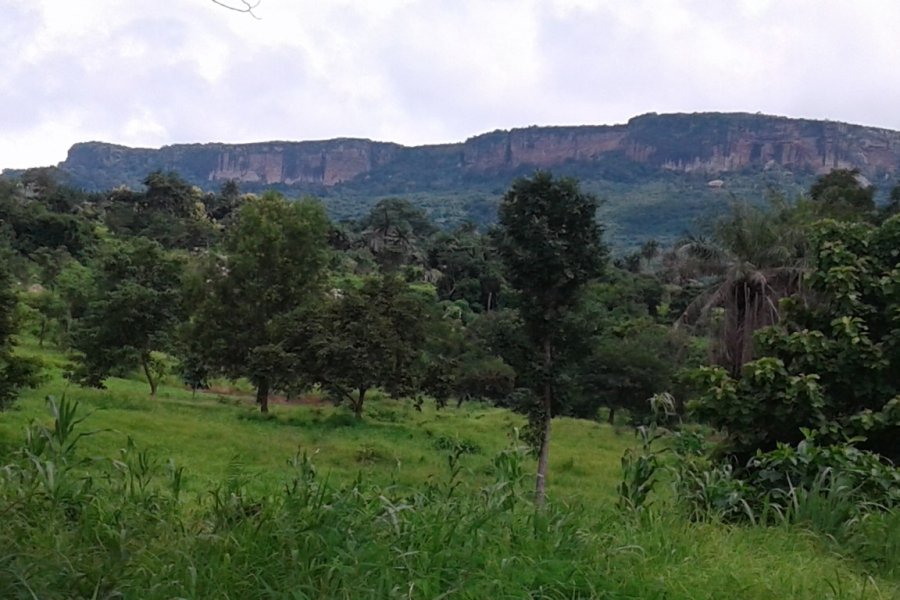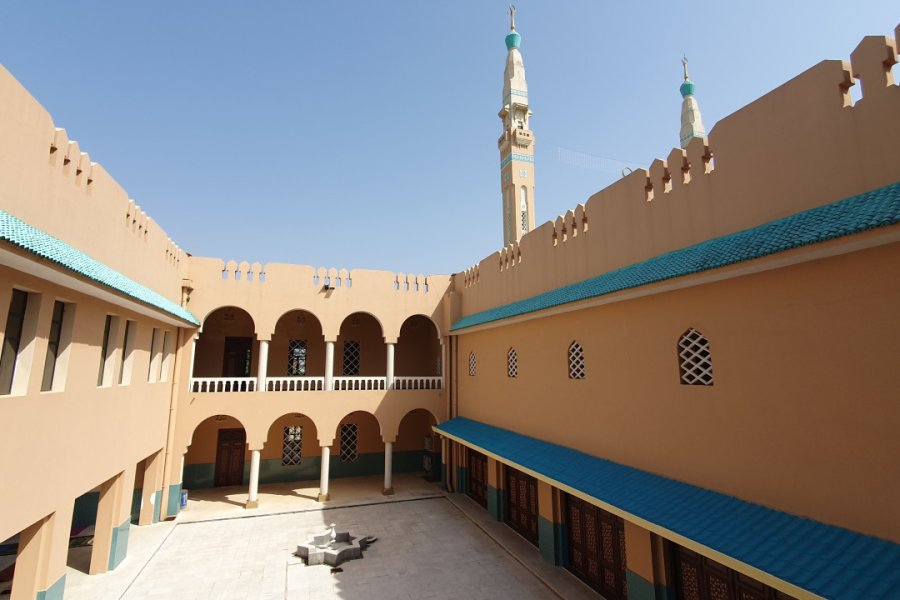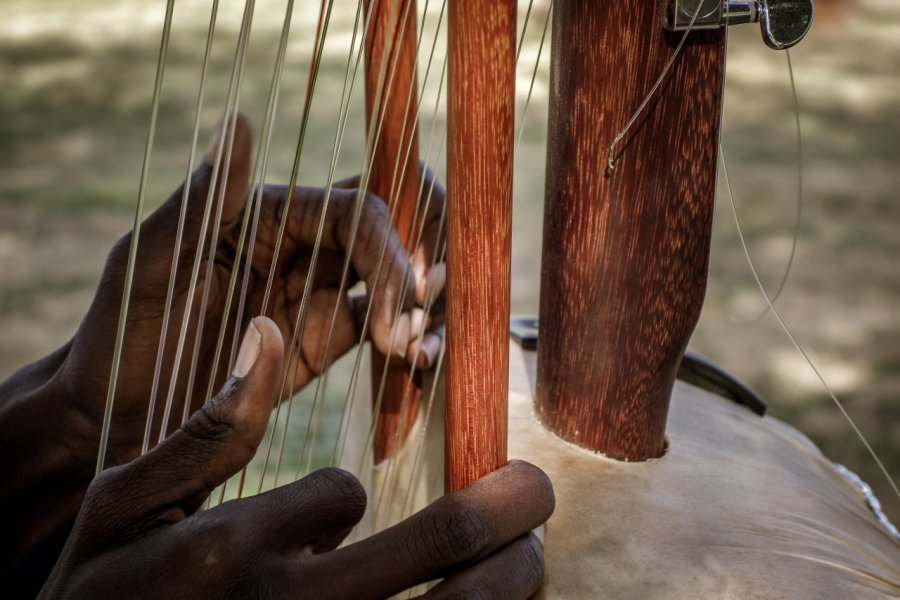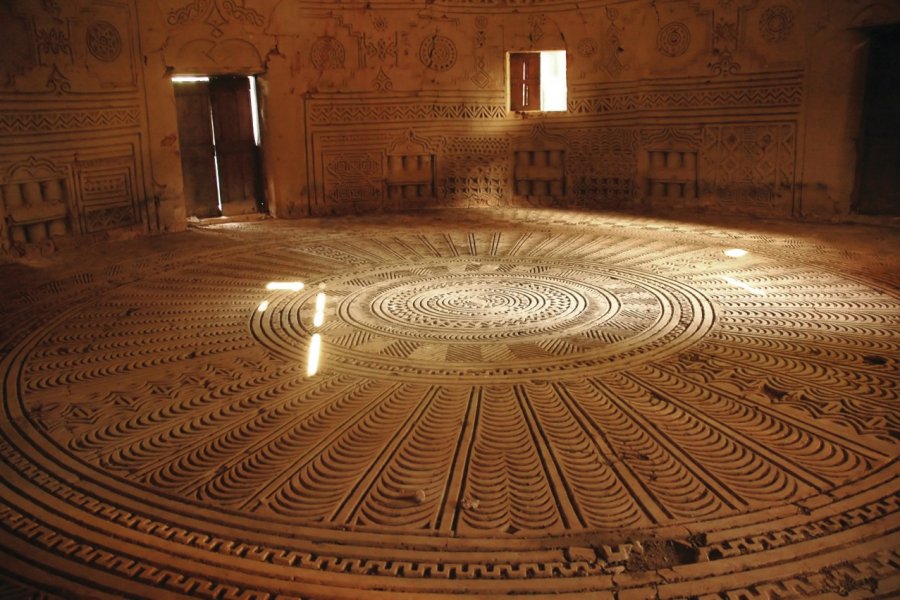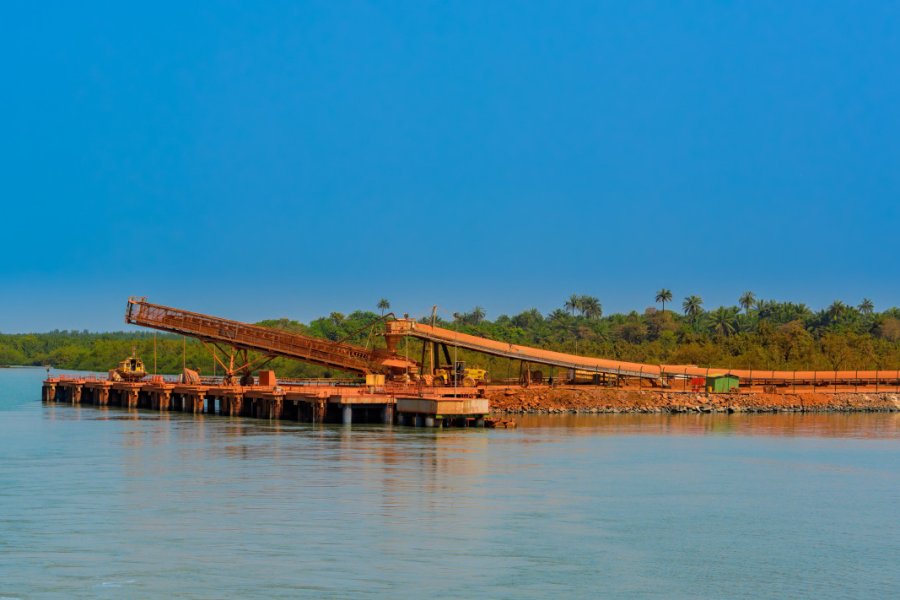Travel guide Guinea
Guinea, often called the "water tower of West Africa" for its many rivers and waterfalls, is a little-known tourist destination. It offers a fascinating diversity of landscapes, cultures, activities and sites to visit. This destination guide invites you to discover it!
Situated between Sierra Leone, Liberia, Côte d'Ivoire, Mali, Senegal and Guinea-Bissau, Guinea has a number of distinct regions. Fouta Djalon, the mountainous heart of Guinea, is a paradise for hikers and nature-lovers. Here you'll discover rolling landscapes, spectacular waterfalls such as the Kambadaga Falls and astonishing biodiversity. Further south, the Forêt region offers a completely different experience, with its thick canopy, nature reserves and exotic fauna.
The capital, Conakry, contrasts with the calm of the hinterland. A bustling port city, it is the country's economic and cultural nerve center. The Grand Mosque of Conakry, one of the largest in West Africa, the National Museum and local markets such as the Niger Market are not to be missed. Discover also the best hotels where you can relax.
Guinea is also a destination where musical and cultural traditions are alive and well. The country is famous for its musical heritage, notably the percussive rhythms and traditional dances that have inspired musical genres far beyond its borders.
Guinean cuisine, a blend of African, French and Arab influences, is also well worth a visit. From "foufou", a paste made from cassava or plantain, to fresh seafood from the Atlantic coast and a variety of spices, your taste buds will be in raptures. Globe-trotters in search of adventure? Guinea Conakry is a destination that marries nature, culture and humanity to perfection.
What to see, what to do Guinea?
-
Book an activity
-
Customized travel
- The most beautiful cities Guinea
When to go Guinea ?
When to visit Guinea? The answer depends on many factors, such as climate, seasonal rates and local events. When to go to Guinea will depend on your personal interests, but we've compiled a few tips to help you plan your trip.
The best time to go to Guinea is generally during the dry season, which runs from November to May. At this time, temperatures are more pleasant and roads more accessible, especially for those wishing to explore the country's rural areas such as Fouta Djalon.
If you travel to Guinea between November and February, you can take advantage of the relatively mild climate for hiking and trekking. It's also the ideal time to visit the Niokolo Badiar National Park, where wildlife viewing is at its best.
The months of March and April in Guinea herald the onset of warmer weather and lower prices, as this is the low tourist season. If you can stand the high temperatures, this is a good time to visit Conakry and the coastal areas.
May to October is the rainy season in Guinea. Access to some rural areas is more complicated due to flooded roads. However, this is also the period when nature is magnificent and the waterfalls, such as those at Kilissi, are spectacular.
As far as events are concerned, January is marked by the New Year, a major celebration in Conakry and other major cities. In April, the Festival des Arts et de la Culture in Conakry is an explosion of Guinean music, dance and gastronomy.
Suggested addresses Guinea
Travel Guinea
-
Find a hotel
-
Car Rental
-
International e-SIM package
-
Find a local agency
Find unique Stay Offers with our Partners
How to go Guinea
How to go alone
If solitary adventure appeals to you, going alone in Guinea is an incredibly rewarding experience. Here are a few tips to help you:
make sure your passport is up to date and find out about visa requirements;
check your vaccination requirements and protect yourself against tropical diseases;
ask locals or other travelers for real-time advice on areas to avoid;
rent a car or use local means of transport such as bush cabs to get around;
learn a few basic phrases in French or local languages;
remember to book at least your first night in advance to give yourself time to acclimatize.
Travelling alone in Guinea will allow you to immerse yourself in the culture, so leave room for adventure!
How to go on a tour
Want to discover Guinea without the hassle of planning? Organized tours are the ideal solution! Not only does this option offer you the convenience of having everything arranged in advance, from flights to accommodations to guided tours, it also lets you enjoy the destination to the full without the logistical hassle.
Many tour operators in Guinea offer diversified itineraries covering the country's highlights:
exploration of the astonishing relief of Fouta Djalon ;
a safari adventure in Niokolo Badiar National Park ;
or relaxing on the islands of Los.
Choose from the options that match your interests! For those looking for a more personalized experience, some tour operators offer tailor-made itineraries. This is your chance to meet like-minded people and benefit from the knowledge of a local guide.
How to get around
You've arrived in Guinea Conakry! Here are a few tips for getting around this fascinating country:
cabs are an affordable and practical way to get around big cities like Conakry. Negotiate the price in advance!
for longer journeys, the taxi-brousse is an authentic, if less comfortable, option;
if you prefer the freedom to plan your own itinerary, rent a car (roads can be in poor condition);
in towns, minibuses and buses are available, and are both crowded and economical;
in some regions, notably Fouta Djalon, renting a bike or motorcycle is the best way to explore the surrounding area;
for islands like Los, ferry services are fairly regular and offer incredible views of the Atlantic Ocean.
Stay flexible and relaxed, as schedules may not be as reliable as those you're used to!
Discover Guinea
Above all, Guinea is a country where tourism is still in its infancy and where tourists are rather rare. As a result, relations with the local populations have not (yet) been perverted and are on the whole healthier and simpler, sometimes tinged with a certain mistrust. This facilitates and makes more pleasant the exchanges, the meetings on the roadside, the visits in the villages. With the sea, the mountains, the tropical forest, the Sahelian savannah, Guinea is rich in a great diversity of landscapes. From one end to the other of the four natural regions, discover, with all your senses on the alert, the strength and the bewitching beauty of a country like no other. Each region has its own ethnic and cultural specificities: sculptures and popular festivals in Upper Guinea, masks and ancestral traditions in Maritime Guinea and in the forest, Fulani culture and crafts in Middle Guinea. A clever cocktail with multiple flavors.
Pictures and images Guinea
The 12 keywords Guinea
1. Bauxite

Ochre-colored ore from which alumina, the basis of aluminum, is extracted. Guinea has become the world's second largest producer. Mostly mined in the west of the country, it accounts for 80% of export earnings. A start for the Guinean authorities despite the serious social and environmental problems posed by this development.
2. Blanco or gandji

Palm wine, produced mainly in maritime Guinea and in the forest, is the result of the fermentation of the sap of palm trees. To collect this sap, the men climb to the top of the said trees with the help of a simple strap. Impressive! Palm wine is the drink of conviviality, often offered to visitors as a welcome.
3. Foté
It's the equivalent of toubab in other African countries or around Kankan. You can hear it in some Conakry neighborhoods from the mouths of children, who are still sometimes surprised to come across foreigners. Foté means "white" in Sousou. You can always say forè, which means "black". In the interior of the country, foté becomes porto in Fouta.
4. Mamaya
Traditional Malinke festivity (Upper Guinea). It is a dance performed by men and women dressed in large embroidered boubous who parade to the slow rhythm of traditional music. The Mamaya of Kankan has become a major cultural event that takes place once a year during the Tabaski festival and brings together hundreds of dancers.
5. Marabout
Designates men with a good knowledge of the Koran, who are consulted for all reasons and occasions (ceremony, travel, etc.) in order to obtain a talisman or to know what sacrifice to make in order to influence fate. Here everyone "consults" and some can pay large sums of money to obtain the services of the most reputable.
6. Néré

A tree and fruit, it is prescribed as a powder to combat yellow fever. Its roots are used as medicine, while its wood is used to make djembes. The multi-purpose néré tree is best known for soumbara, a powder made by crushing its dried, cooked and fermented seeds, used as a "bouillon cube" with a powerful aroma.
7. Nimba
Baga mask (Maritime Guinea) representing the idealization of the role of women in society. It evokes a mother who has given birth to many children, and who has prepared them for a fertile adulthood. It has become a symbol of Guinea, so much so that nimba statuettes have become a staple of woodcarvers.
8. No
In 1958, Sékou Touré decided to say "no" to the referendum organized by de Gaulle proposing that metropolitan France and the colonies form a Franco-African community. Guinea, he said, "prefers freedom in poverty to wealth in slavery". The country became independent on October 2, and Sékou Touré became its first president.
9. Syli

The country's currency under Sékou Touré, syli means "elephant" in Sousou. For Guineans, it is a strong symbol: the elephant knows only one road and nothing can stop it. It always reaches its goal. It represents strength. It is also the name of the national soccer team. It is a pity that this species has almost disappeared from the country.
10. Tappa lappa
Poular term designating the bread that is sold throughout the territory and expressing the fact that the dough is literally slapped during preparation. Sold in the form of a large baguette, it is the tastiest when it comes out of the oven in the early morning. There is not a town that does not have its own oven. An oddity for a country that does not produce a grain of wheat.
11. Proud
Proud of the no of 1958. Proud to be Guinean. This pride, built in adversity, sometimes sounds like a slogan that is a little out of touch with the realities of daily life. This term is often used by Guineans abroad to mark their attachment to their homeland despite all the difficulties that the country of their ancestors faces.
12. Wontanara
A Soussou term that means "We are together", "We are united". It expresses the fact of being united, of helping each other in adversity. This expression used in many advertising slogans on posters has lost some of its strength, but it is still often taken up and shared in the face of daily trials.
You are from here, if...
You're in your car honking your horn even though you're totally stuck in traffic.
You attend a wedding, a christening and a birthday party all in one weekend. Social affairs are sacred here and are the main distraction on weekends.
The expression We tefa is not unfamiliar to you. It is most often heard in the form of a clamor caused by the cries of children when the often capricious electric current returns after a cut: we tefa or "the current has come".
You tell your friends "I'm coming" and two hours later you are still not there. And when they ask you if you had a problem, you answer "no, nothing, I told you I was coming"..
You take any means of transportation to walk even 500 meters, the lack of sidewalks and the anarchic traffic combined with the ambient heat discouraging the most reckless walkers in Conakry.

